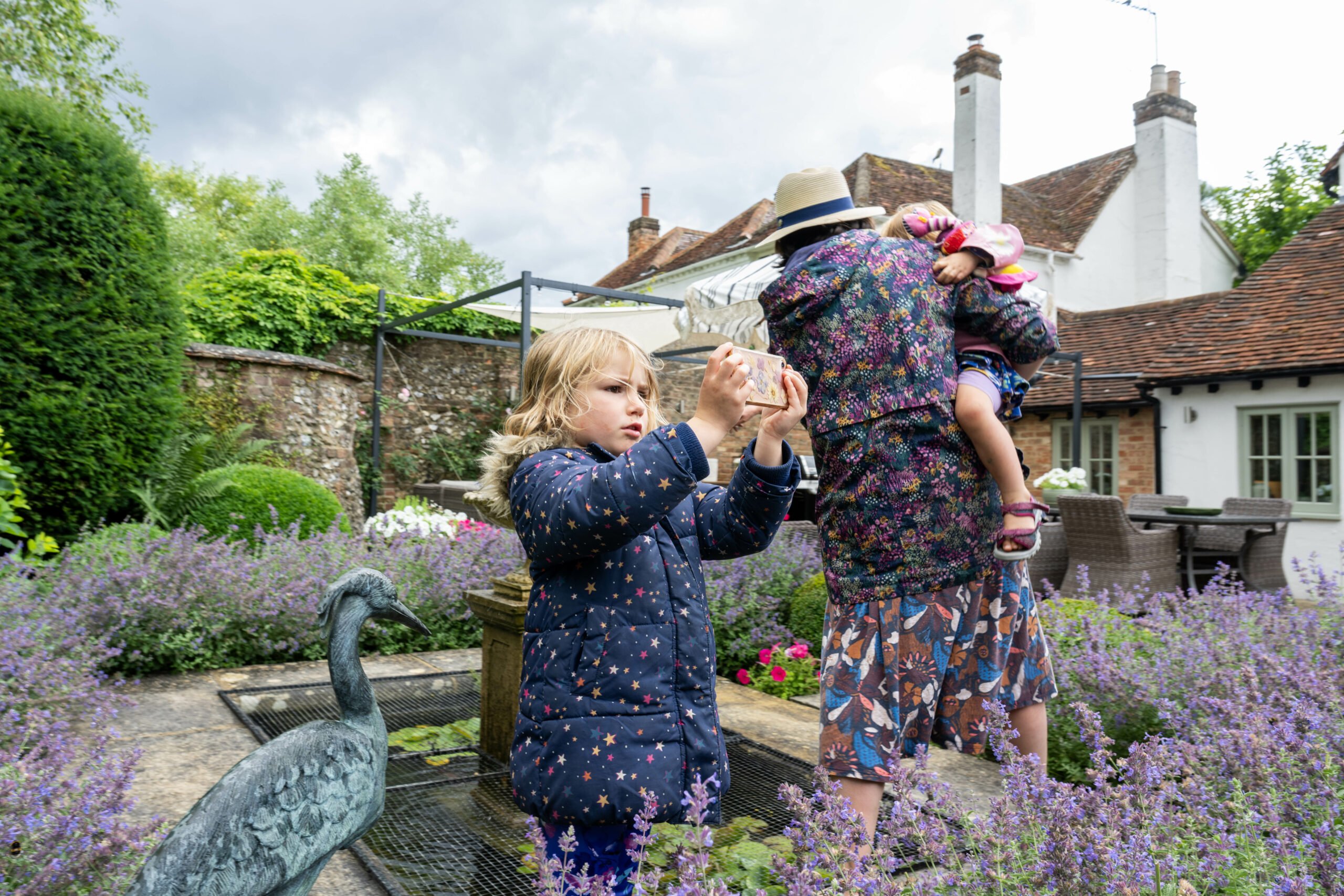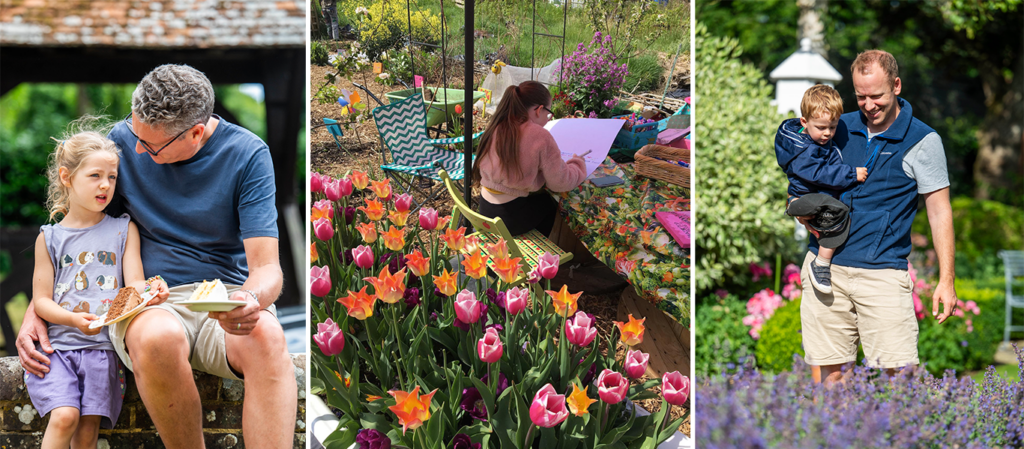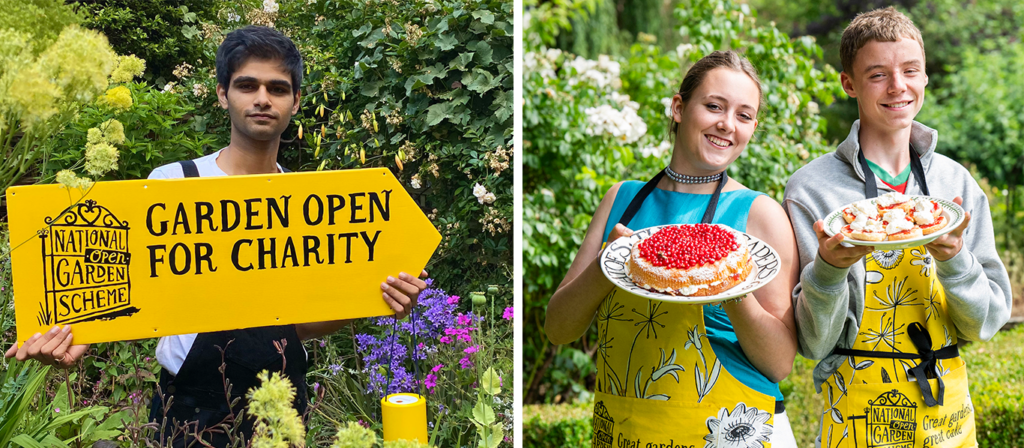Green Shoots: Rewilding the Hearts of the Young

By Andrew Jackson
There is a moment in early spring when the earth breathes again. You can hear it – in the hush of dawn, in the pause between raindrops – like a soft uncoiling. In the folds of soil, unseen, life stretches out sleepy limbs, and something stirs in us too. This quiet covenant between people and place is, at its core, the poetry of gardening. But how do we pass this intimate grammar of soil and stem on to the young? How do we, who have found solace and sanctuary in the garden, make space for a new generation of gardeners?
In my own memory, gardening did not arrive as a duty or a hobby. It arrived like weather—a change in the air, a scent carried on the wind. I remember a patch of nettles behind my grandfather’s shed, humming with hoverflies, and the way he’d stoop to show me the shape of a dock leaf. That was my first apprenticeship: a tactile lesson in nature’s own remedies. What we too often forget is that children are not born estranged from the green world—they are born into it, sensuous and curious. Our task is not to teach them nature, but to keep them from unlearning it.
The Garden as Portal
To a child, a garden is not just a place—it is a portal. Behind every shrub lies a thicket of possibility; under every stone, a mystery. If we are to welcome more young people into gardening, we must first let go of the idea of gardening as a chore, a checklist of weedings and prunings. Instead, let it be an invitation to wonder.
Let gardening become an act of enchantment, not merely of cultivation. There are stories rooted in soil, mythologies in the margins of meadows. Ask a child why foxgloves wear thimbles, or what secrets the worms whisper to the roots. They know, instinctively, that nature speaks in more than chlorophyll and Latin names.
This is where the work of the National Garden Scheme becomes quietly revolutionary. Every year, National Garden Scheme opens thousands of private gardens to the public – not just to show off borders and blooms, but to tell stories. These are living landscapes, rich with history and shaped by human hands. And when young people walk through these gates – whether a cottage garden in Cumbria, a rooftop oasis in Birmingham, or a school allotment in East London – they enter not just someone’s backyard, but a living archive of possibility.

Enjoying a visit or spending time at an after school club like Skool Beanz (centre) can be inspiring for young minds
Seedbeds of Change
The question then becomes: how do we turn that inspiration into action?
It begins in the places where young people already gather – schools, youth centres, libraries, parks and the National Garden Scheme is already planting seeds in these spaces with proceeds from garden openings helping to fund a wide range of health and community gardening projects both through its Community Garden Grants and its support of The Country Trust which is aimed primarily at involving children and young people in nature, growing food and horticulture.
Imagine if every school garden were not a forgotten corner behind the bins, but a beating green heart of the curriculum. A maths lesson in the plotting of beds, a history class through heirloom seeds, science through composting, art through sketching the silhouettes of seedheads. Let gardening be not an afterthought, but a medium through which we explore the world.
And here, the National Garden Scheme could be a powerful bridge. With over 3,300 gardens opening each year, many with deep local roots, the opportunity for partnerships between these spaces and local schools or youth groups is profound. Garden owners could become mentors, gardens themselves outdoor classrooms. Why shouldn’t a group of Year 9 students be invited to visit a local National Garden Scheme garden, to sketch its wild edges, or sow a patch of their own?
Rewild the Imagination
One of the most radical things we can do for young people today is to let them be unstructured in nature. So much of modern childhood is mediated, timed, assessed. But gardens can be liminal spaces – neither truly wild nor rigidly tame – where freedom blooms.
Create corners of the garden that are not managed, but allowed. Let brambles be brambles. Let nettles stand for butterflies. Build dens with logs, or leave secret paths through tall grasses. Let the garden whisper its own ideas to young minds.
And crucially: give them real ownership. A pot, a raised bed, even an old sink they can fill with wildflowers. Let them make their own mistakes – plant too close, forget to water, overdo the feed. The garden is a forgiving teacher, and the lessons it gives stick deeper than anything learned from a screen.
For teenagers, especially, create opportunities for purpose. Wildflower planting for pollinators. Edible beds for food banks. Composting schemes at school. These aren’t chores—they’re acts of climate hope. The National Garden Scheme, through its charitable work, supports a number of therapeutic and community-based gardening projects – many of which involve young people tackling real-world issues with plants and patience.

Volunteering to support a garden opening is a great way to get involved
The Garden as Resistance
Today’s young people live under the shadow of ecological anxiety. Rising temperatures, vanishing species, the daily drumbeat of climate loss -these are not distant fears, but present realities. Gardening must not offer mere distraction from this grief. It must offer agency.
To plant a tree is to believe in the future. To grow food is to reclaim autonomy. To nurture a bee-friendly corner of a city is to say: not everything has to vanish.
Let them see that gardening is not passive. It is a form of resistance, of rewilding not only land but mind. And let them know that they are not alone. Every spring, the National Garden Scheme becomes a kind of quiet national movement – thousands of gardens flinging open their gates, not for profit, but for healing, for inspiration, and for the collective joy of growing.
Encourage young people to be part of that. Let them volunteer at open gardens – many already do – many garden owners did when they were young. Let them photograph the change of seasons. Let them write, draw, design, document. Invite them to share their perspective – what they see in the garden that we might miss.
Digital Gardens and Real Growth
Rather than pulling young people away from their screens, why not plant gardens within them? The visual, story-driven nature of platforms like TikTok and Instagram lends itself beautifully to the cycles of gardening – sowing, tending, harvesting, reflecting.
The National Garden Scheme could become a hub for digital garden storytelling – featuring content by young people, for young people. Garden tours filmed by teenagers, seed challenges, compost tips, #BeforeAndAfter plots, timelapse tulips. The aim isn’t to virtualise the garden – but to let technology be a trail that leads back to it.
Cultivating Belonging
More than anything, young people need to feel that gardens are places where they belong. That they do not need expertise, or land, or Latin. That their way of seeing – through colour, through culture, through curiosity – is valid.
So open the gates wider. Celebrate plants from across the globe. Include edible and medicinal plants from a dozen culinary traditions. Let young people see their family histories reflected in what grows.
Invite them into garden planning days. Feature their poems in your borders. Let them paint signs, or build bee homes, or choose the names of your garden zones. When they have a voice in shaping the garden, they will never again feel excluded from it.
Final Words: Tending the Future
In the end, to draw more young people into gardening is not a campaign – it is a covenant. Between generations. Between people and place. Between what is growing now, and what will bloom long after we are gone.
The National Garden Scheme has always understood this quiet legacy. Since 1927, it has opened the gates not just of gardens, but of possibility. It has funded nursing care, supported community gardens, enabled therapeutic horticulture, and – perhaps most vitally now -helped ensure that the next generation feels not just welcome in the garden, but essential to its future.
Let us give young people the tools, the time, and the trust. Let us give them compost, and stories, and the gentle confidence that not everything must be hurried. Let them plant mistakes, and marvels, and the first shoots of something all their own.
And when next spring comes – when the world stirs again, quietly, beneath our feet- may we hear, among the birdsong and the bees, the laughter of children in the borders, and know the garden is in good hands.
Get Involved with the National Garden Scheme
- Visit a Garden: Thousands of unique gardens across England, Wales, Northern Ireland, and the Channel Islands open their gates each year. Bring your children, grandchildren, or youth groups – many gardens offer family-friendly features and open-air adventures. And what’s more, entry is free for children in the majority of National Garden Scheme gardens.
- Apply for Funding: Schools, community groups, and youth initiatives can benefit from National Garden Scheme funded grants for health and wellbeing projects involving gardening. For more click here.
- Volunteer or Open Your Garden: Young people can gain confidence and experience by volunteering at garden openings – or even helping plan one!
- Explore Online Resources: Discover inspiring youth gardening stories, digital content, and ideas for involving children in your own garden at ngs.org.uk.
Let your garden – and your gate – be open.
About Andrew Jackson:

Andrew is a new build gardener and the visionary founder of the New Build Manifesto, a campaign championing better access to and higher quality new build spaces. As an award-winning garden designer and writer who was featured on BBC Gardeners’ World in June, 2025, Andrew embodies the creativity and passion that comes from time spent outdoors, in nature . Andrew will be opening his garden – 1 Wilds Pasture, part of the Beverley Gardens group, East Yorkshire – on 21 June 2026.
Follow Andrew’s journey via: Scribehound Gardening @thenewbuildmanifesto


















